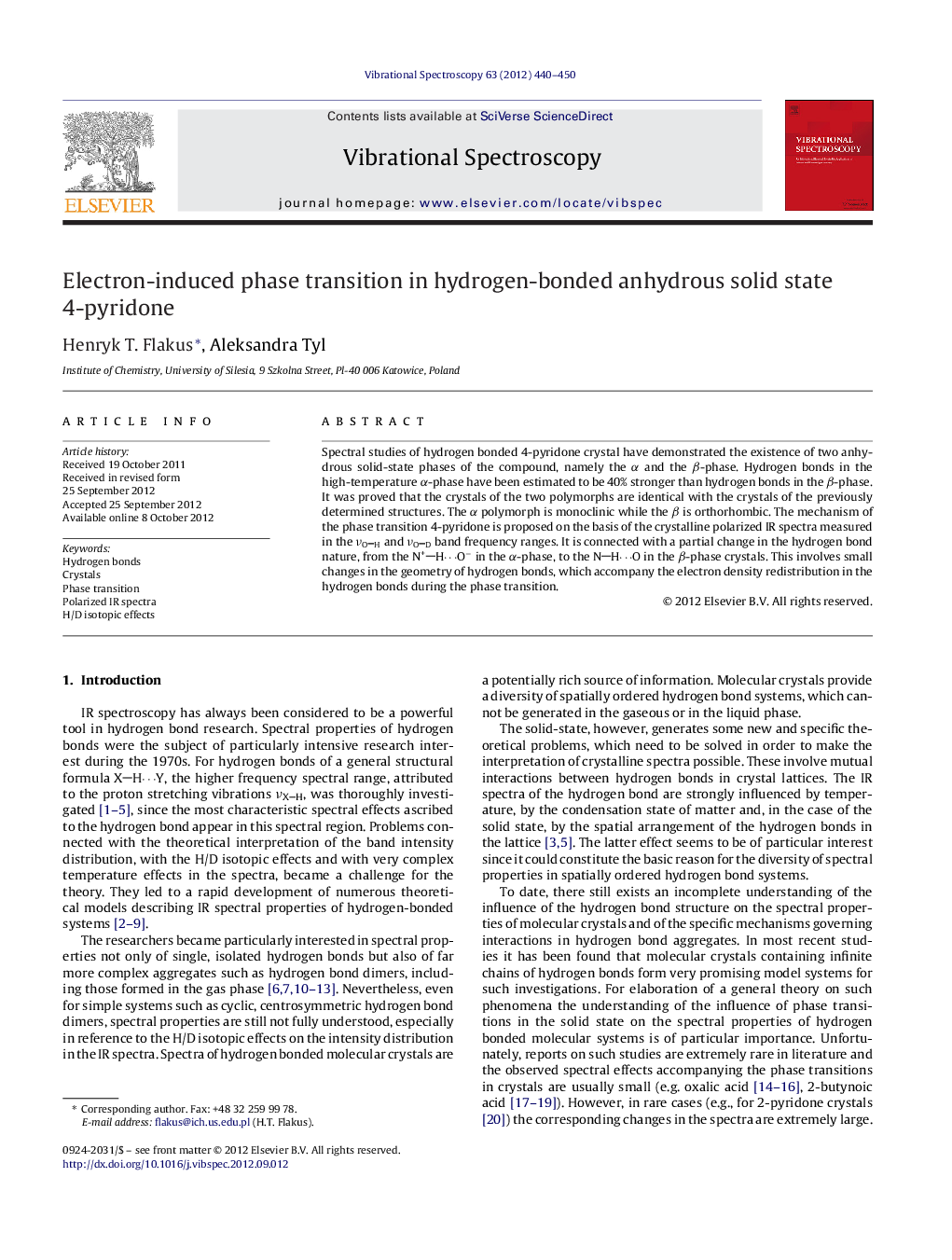| Article ID | Journal | Published Year | Pages | File Type |
|---|---|---|---|---|
| 1250444 | Vibrational Spectroscopy | 2012 | 11 Pages |
Abstract
Spectral studies of hydrogen bonded 4-pyridone crystal have demonstrated the existence of two anhydrous solid-state phases of the compound, namely the α and the β-phase. Hydrogen bonds in the high-temperature α-phase have been estimated to be 40% stronger than hydrogen bonds in the β-phase. It was proved that the crystals of the two polymorphs are identical with the crystals of the previously determined structures. The α polymorph is monoclinic while the β is orthorhombic. The mechanism of the phase transition 4-pyridone is proposed on the basis of the crystalline polarized IR spectra measured in the νOH and νOD band frequency ranges. It is connected with a partial change in the hydrogen bond nature, from the N+Hâ¯Oâ in the α-phase, to the NHâ¯O in the β-phase crystals. This involves small changes in the geometry of hydrogen bonds, which accompany the electron density redistribution in the hydrogen bonds during the phase transition.
Related Topics
Physical Sciences and Engineering
Chemistry
Analytical Chemistry
Authors
Henryk T. Flakus, Aleksandra Tyl,
